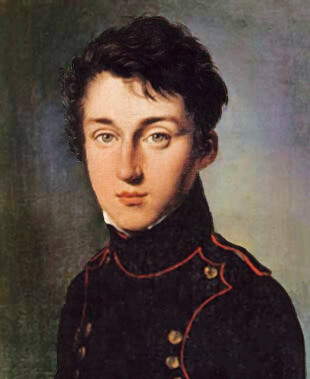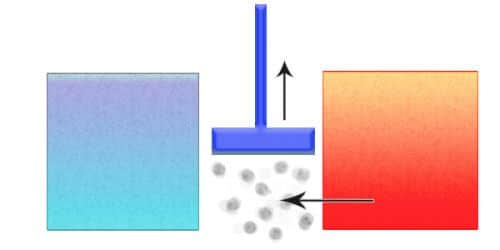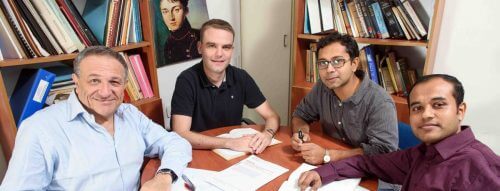
In 1815, after the final defeat of Napoleon Bonaparte at the Battle of Waterloo, a young officer in the French army was transferred to a rear position, in Paris, with a significantly reduced salary. The sin of the young officer, Sadi Carnot, was the fact that his father, Lazarus Carnot, served as Napoleon's Minister of the Interior during the "Hundred Days", and before that was his Minister of War. The father and son were both - in addition to being army officers - mathematicians and engineers.
In those days, efficient steam engines gave England a distinct advantage over France, and other European countries. Sadi Carno, despite the damage to his status, looked for ways to benefit his homeland. He mainly thought of ways to produce steam engines that would be more efficient than those of the English. After nine years of independent research, he reached certain conclusions, but was unable to publish an article in any scientific journal. In his great disappointment, in 1824, he produced and published, at his own expense, a book called "Reflections on the Motive Power of Fire".
These "reflections" led Kerno to quite sharp conclusions regarding the efficient ways to convert heat into work, as well as regarding the limits of power, that is, regarding the maximum amount of work that can be produced from a given heat (utility). And here's a spoiler: today, 194 years after Carno was forced to publish his findings at his own expense, it turns out that the principles and limits he set are still correct and valid, and what's more, they are also valid in the realms of quantum theory. Carnot's heat engine is built, in principle, from what can be described as a heat "bath", a cold bath, a "working fluid" (which may be, for example, a spray of burned fuel), and a piston that conducts the energy out.

20 years after Carnot's "reflections" were published, they were examined by another young officer, Rudolf Clausius, who was the commander of a cavalry company in the Prussian army. At the same time, the Englishman William Thomson, who later became known as "Lord Kelvin", also did this. They discovered that the upper limit of survival established by Karno is only theoretically possible, in a "frozen" world, which stands still, and nothing happens in it; Or in other words, that the entropy in it remains constant. Entropy is the number of states that can exist in any closed system. It can also be described as the "degree of disorder" in the system. Clausius and Lord Kelvin used Carnot's description of the heat engine, and its efficiency limit, to formulate the second law of thermodynamics: entropy (the degree of disorder in a closed system) can only increase. This law does not bode well for the world, but so far all attempts to find ways to break it have been shattered on the rocks of reality. Thus it was agreed upon by all, that Carnot's (theoretical) utility limit is the upper limit, that there is no way to cross it and reach greater utility.
A few more decades passed until John von Neumann showed that the laws of thermodynamics are also valid in the domain of quantum theory. But in 2003, Marlene Scully challenged this consensus. It was based on "quantum fuel" - atoms in which the energy levels (orbits) of the electrons around the nucleus are controlled through changes in the appearance of a laser light beam that comes from an external source. In this way, Scully increased the temperature of the hot bath in the heat engine beyond the degree of heat that can be reached in a normal system. Increasing the heat difference between the hot and the cold bath increases the efficiency of this system beyond the Carnot limit of efficiency.
Other scientists, including the German Eric Lutz, suggested raising the temperature of the hot bath by compressing the quantum system, which led to the result of crossing the Carnot limit of utility. But this proposed system was no longer a "heat engine", since part of its power was due to work (compression) coming from the outside. In other words, Lutz's quantum system is a kind of "hybrid machine", whose power comes from a combined investment of heat and work.

Here, more or less, Prof. Gershon Kuritsky and his group members, the postdoctoral researchers Dr. Wolfgang Nidanzo, Dr. Victor Mukherjee, and Dr. Arnab Ghosh from the Department of Chemical Physics at the Weizmann Institute, who worked in collaboration with Prof. Luis Davidovich from Brazil. They showed that compression of the piston of the quantum machine (not of the hot bath) may lead to a significant increase in the power of the machine. But even this increase still ends up below Carnot's theoretical utility limit. This is, among other things, because they calculated and subtracted from the power obtained the "cost" of the work that must be invested in improving the performance of the quantum machine (a reduction that was not carried out in Lutz and Scully's calculations).
Here it is, after 194 years, the calculations of the scientist whose article was not accepted in any scientific journal, are still valid. Carno himself, apparently, did not imagine that his findings would turn out to be so significant. Four years after he published his findings, and after he was forced to leave his military service, without a pension, he was hospitalized in a closed institution for the mentally ill. There, when he was 36 years old, he contracted cholera and died.
#Science_Numbers
The enrichment of the quantum fuel may increase the efficiency of the Carnot heat engine from 10% to 90%.

2 תגובות
You'll sing
Entropy? According to the rules of transcription - and also according to practice - the Hebrew form of the word entropy is entropy.
t is transcribed to t while th to t. That's why we write, for example, mathematics and not mathematics.